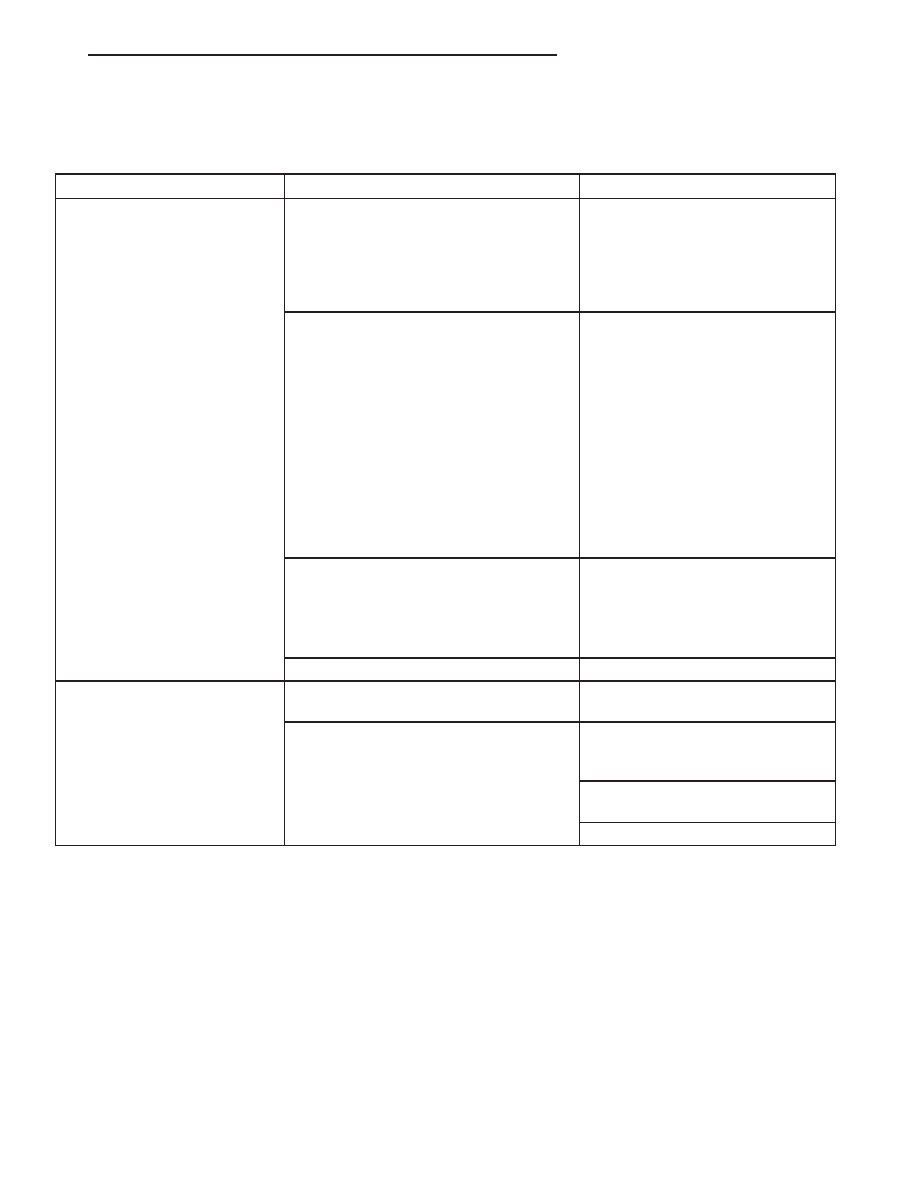Content .. 1242 1243 1244 1245 ..
Chrysler RG Voyager. Manual - part 1244

DIAGNOSIS AND TESTING - VEHICLE DOES
NOT FILL
CONDITION
POSSIBLE CAUSES
CORRECTION
Pre-Mature Nozzle Shut-Off
Defective fuel tank assembly
components.
Fill tube improperly installed
(sump)
Fill tube hose pinched.
Check valve stuck shut.
Control valve stuck shut.
Defective vapor/vent components.
Vent line from control valve to
canister pinched.
Vent line from canister to vent
filter pinched.
Canister vent valve failure
(requires double failure,
plugged to NVLD and
atmosphere).
Leak detection pump failed
closed.
Leak detection pump filter
plugged.
On-Board diagnostics evaporative
system leak test just conducted.
Canister vent valve vent
plugged to atmosphere.
Engine still running when
attempting to fill (System
designed not to fill).
Defective fill nozzle.
Try another nozzle.
Fuel Spits Out Of Filler
Tube.
During fill.
See Pre-Mature Shut-Off.
At conclusion of fill.
Defective fuel handling
component. (Check valve stuck
open).
Defective vapor/vent handling
component.
Defective fill nozzle.
RS
EVAPORATIVE EMISSIONS
25 - 17
ORVR (Continued)